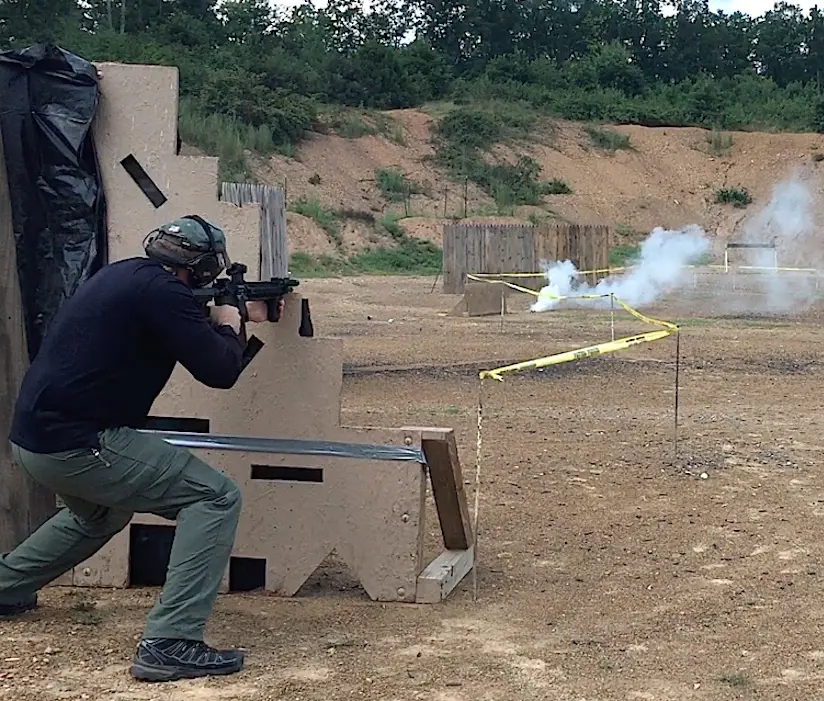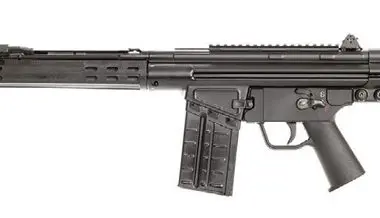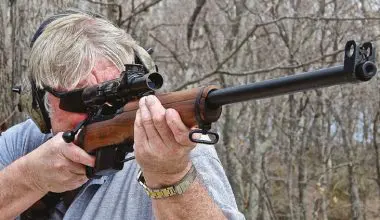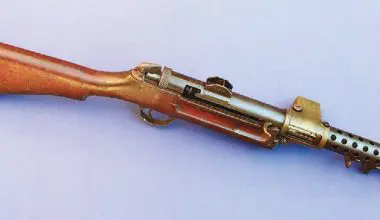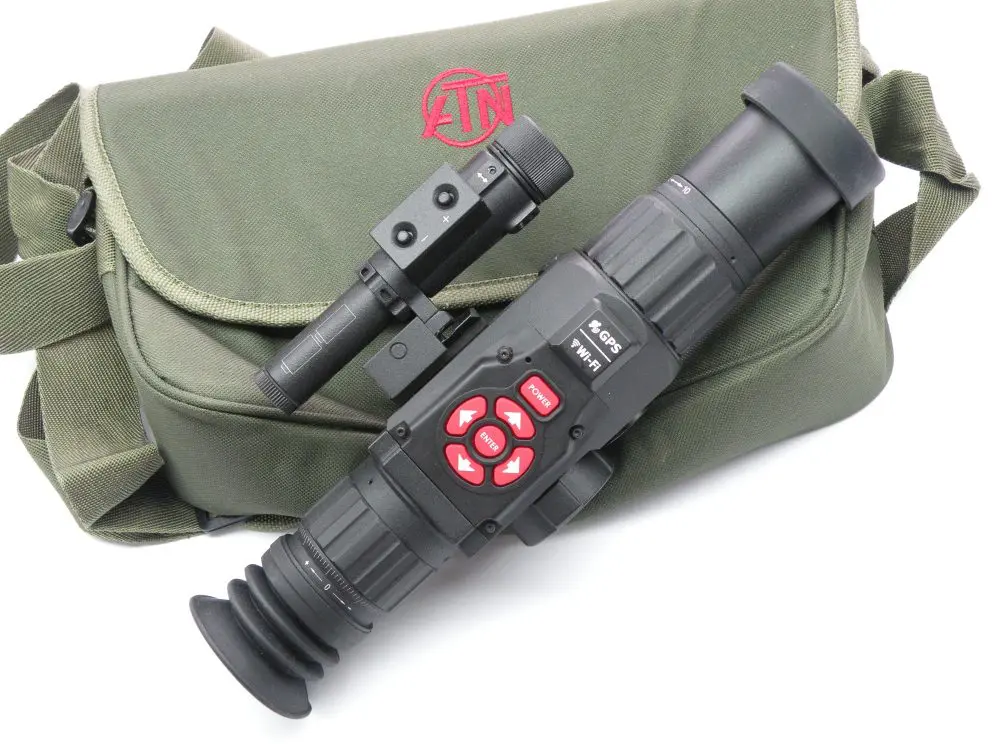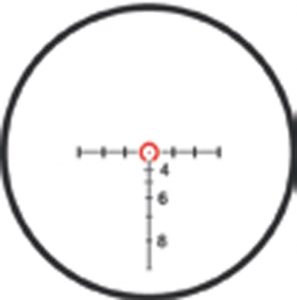
We all had to sign non-disclosure agreements and not write about the scopes for some months. We tried a number of interesting scopes, but the one that especially impressed most of us was the Mark 4 HAMR (High- Accuracy Multi-Range).
The HAMR is another of those scopes designed to allow special operators to quickly transition from a CQB optic to one usable at longer ranges. The basic scope is a 4X24mm fixed magnification optic. It uses Leupold’s CM-R reticle, which incorporates a circle/dot with vertical post with stadia lines marked to 800 meters and a horizontal line for ranging and leading a target.
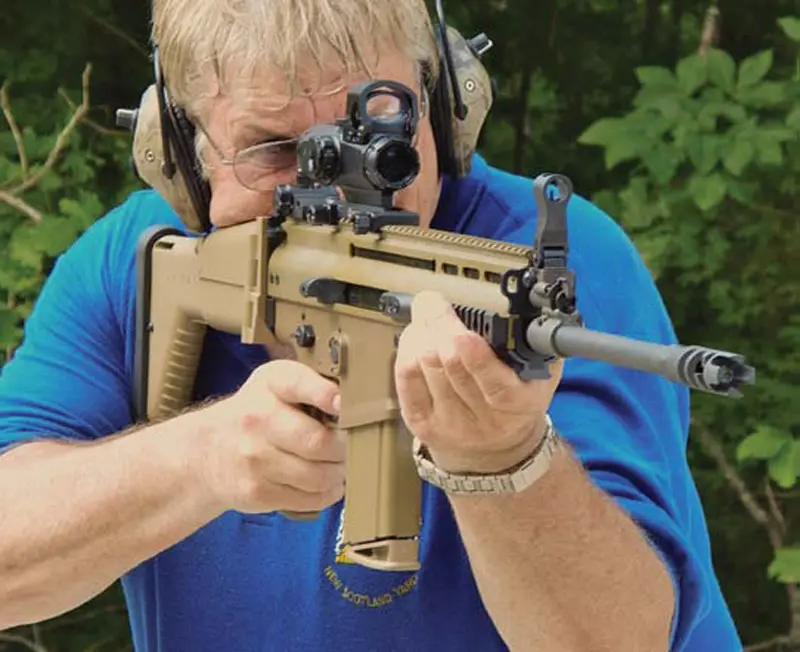
For use in low light, the reticle is illuminated in the central portion. Once the reticle is zeroed with the central dot on at 200 meters, engagement at greater distances may be performed using the top of the post or stadia lines. The reticle is ballistically matched for M855 ammo.
Other features that one expects from Leupold include etched glass reticle, Diamond Coat 2 lens coatings to provide scratch resistance, water and fog proof, and Xtended Twilight Lens System for better brightness and detail in low light (this system will be available on various Leupold Tactical Scopes).
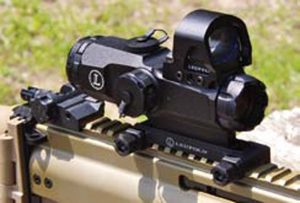
The HAMR is quite compact and has a footprint that does not clutter the rifle’s rail. Overall length is 5.6 inches with a mounting footprint of 3.73 inches. Weight is 14.8 ounces (with Delta- Point). Designed for military usage, the HAMR is built very tough.
Although the HAMR is available by itself, it can also be ordered with a Leupold DeltaPoint red-dot sight mounted. The combo offers the versatility of using the red dot for CQB and transitioning to the CM-R reticle for 50 meters plus. Eye relief on the HAMR is 2.75 inches, which also positions the eye correctly for using the DeltaPoint. Later I’ll discuss a couple of considerations when transitioning from the HAMR to the DeltaPoint.
When shooting the HAMR at Leupold, we used the military version of the Remington ACR. For my tests, I mounted it on the FNH SCAR-L. I realize the HAMR is designed primarily as a 5.56x45mm optic, but to 300 meters there will be little difference and since I had a SCAR-17 to test, I chose it.
I also had another reason for using the SCAR. When shooting the HAMR on the ACR, I had learned that having the tip-up cheek pad on SCAR-type rifles allows a perfect cheek weld when using the DeltaPoint, so I wanted to be able to use the same feature on the SCAR-L. Tactically, it would seem that for patrolling or normal LE usage, the cheek pad could be kept in place for use with the red dot. If a longer shot were called for, it could quickly be dropped to standard position to allow use of the CM-R reticle. It is possible to use the CM-R reticle HAMR with the cheek pad up.
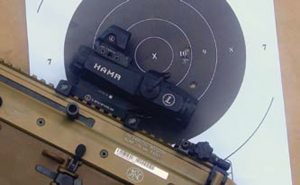
Another advantage of mounting the HAMR on the SCAR-L is that the Back- Up Iron Sights (BUIS) are just the right height to use through the HAMR. This is an advantage, though since the HAMR reticle does not require illumination except at night should the battery die, the CM-R reticle is still visible. To enable the rear sight to flip up, the HAMR has to be mounted a bit forward on the Picatinny rail, but the eye relief was fine with the scope in this position.
I had been impressed with the HAMR when I tested it at Leupold, but as there were multiple writers and we had various scopes to test, I only got to fire 50 rounds or so using it. Now that I have one for more comprehensive testing, I’ve put another 120 to 150 rounds through it. I’m still impressed.
I have a blurred right eye awaiting cataract surgery. Although this is a disadvantage for precision shooting, it does offer a different perspective—in many ways—on reticles. For example, when using the HAMR at 100 yards, I could not see the small center dot for purposes of aiming. On the other hand, if I were careful, I could use the circle around the target and place my shots relatively well.
This reinforced what I had previously found when using this type of reticle. Placing the circle around a target allows very fast engagement, even at longer ranges, with good precision. Having said that, I did not shoot the 100-yard group pictured here. A friend who was shooting with me and who had some trouble seeing the dot himself managed the best 100-yard group of about 1.5 inches for three shots.
The troops who are likely to be using the HAMR will have much better eyesight than I do these days. When I was moving among plates at 35 yards using the DeltaPoint, it allowed very fast engagement. I shot using the Delta- Point with the cheek rest raised on the SCAR-L and with it down. It was more comfortable with the cheek rest up, but I could engage quite well using the DeltaPoint without raising the cheek rest by shifting my face slightly. I also found the HAMR very fast for engaging plates at 100 and 200 yards just by placing the circle portion of the reticle on them.
Because the HAMR is compact and relatively light, it did not adversely affect the SCAR’s balance and allowed me to quickly engage targets from the low ready position. I’d rate the HAMR one of the best short- to medium-range tactical scopes I’ve tested in some time. It’s designed with Leupold quality and military contract toughness. A substantial number are already in the hands of troops and performing well. By the time this article appears, the HAMR should be available for civilian purchase.
I’ve heard complaints from both law enforcement and civilian users about spending more for an optical sight than they spend for their carbine or rifle. My usual reply is that an optical sight has to be capable of standing up to hard use, allow quick usage, and put the bullet where the user wants it to go. The HAMR does all three very, very well.
There are definitely less expensive sights than the HAMR, but you do indeed get what you pay for with optics— and I have always found that to be the case with Leupold.
